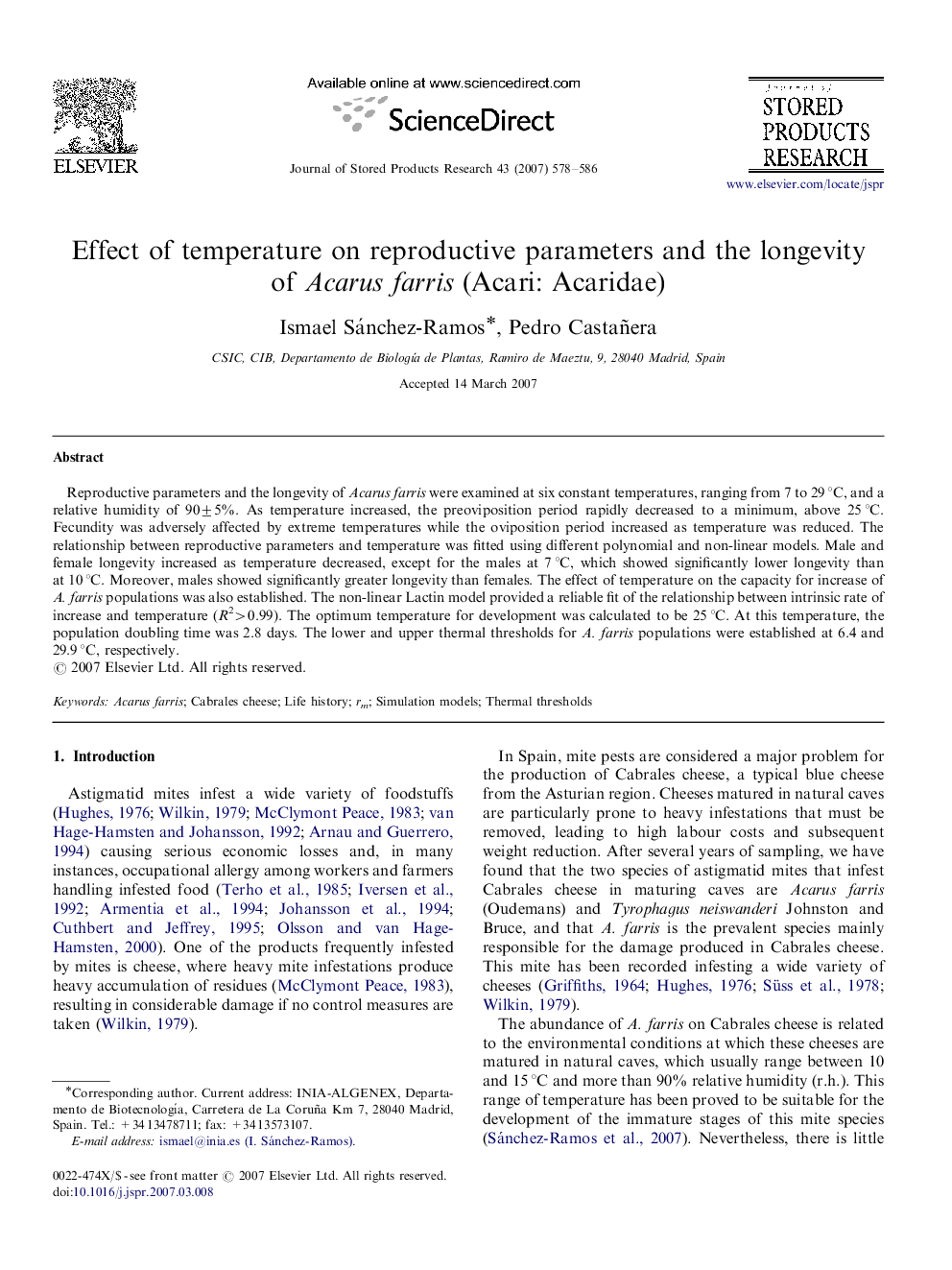| Article ID | Journal | Published Year | Pages | File Type |
|---|---|---|---|---|
| 4517448 | Journal of Stored Products Research | 2007 | 9 Pages |
Reproductive parameters and the longevity of Acarus farris were examined at six constant temperatures, ranging from 7 to 29 °C, and a relative humidity of 90±5%. As temperature increased, the preoviposition period rapidly decreased to a minimum, above 25 °C. Fecundity was adversely affected by extreme temperatures while the oviposition period increased as temperature was reduced. The relationship between reproductive parameters and temperature was fitted using different polynomial and non-linear models. Male and female longevity increased as temperature decreased, except for the males at 7 °C, which showed significantly lower longevity than at 10 °C. Moreover, males showed significantly greater longevity than females. The effect of temperature on the capacity for increase of A. farris populations was also established. The non-linear Lactin model provided a reliable fit of the relationship between intrinsic rate of increase and temperature (R2>0.99). The optimum temperature for development was calculated to be 25 °C. At this temperature, the population doubling time was 2.8 days. The lower and upper thermal thresholds for A. farris populations were established at 6.4 and 29.9 °C, respectively.
